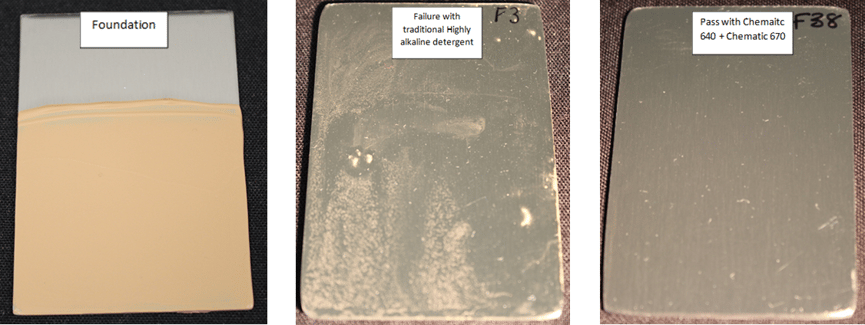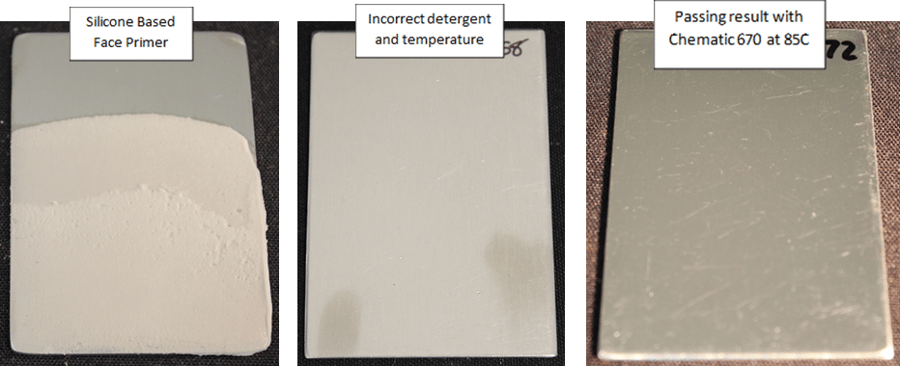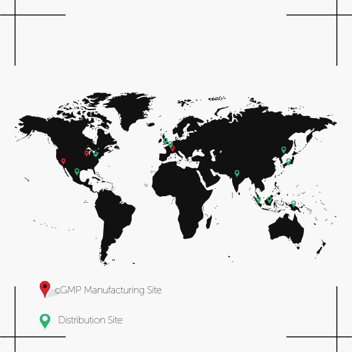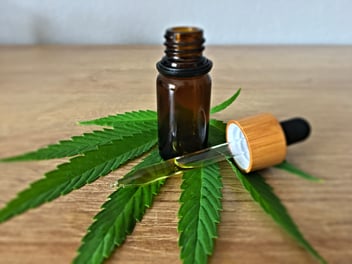How to Clean Cosmetics
New innovations in cosmetics have resulted in the development of products that are not only highly pigmented but also long-wearing. While these advances have allowed for great gains in terms of product performance, they also pose their own unique challenges for cleaning of the production equipment.
Cleaning is a crucial part of cosmetics manufacturing. The smallest amounts of residue left behind on production surfaces have the potential to become an ideal breeding ground for microbial growth and can result in contamination and the loss of batches. Developing the proper cleaning process is essential to achieving compliance, meeting consumer demands, and protecting the revenue and growth of the business.
Challenges in Cleaning Cosmetics
Difficulties in cleaning for these products typically come from pigments and insolubles, difficult product bases (silicones, oils, waxes), or viscosity modifiers.

Pigments and Insoluble Solids
Pigments and insolubles can settle out of the formulation and adhere to surfaces leaving behind hazes or colored residues. Often times, these hazes can be difficult to see under standard facility lighting. Detergents for these types of products need to have a robust surfactant and dispersant package to ensure that pigments and insoluble solids are suspended in the detergent solution and able to be rinsed out of the equipment without re-depositing. Special attention should also be paid to the temperature of both pre-rinses, wash steps, and final rinses. Hot pre-rinses can strip away components of the product matrix, causing pigments and insoluble solids to remain and bind with the substrate to be cleaned. Wash steps that are either too hot or too cold can alter cleaning effectiveness. If possible, ambient temperatures are recommended for the final rinse steps, to ensure any remaining particles are flushed from the system. Hot temperatures can cause flash drying, allowing pigments and insoluble to dry in place.
Difficult Product Bases
Certain product bases, such as silicones, waxes, and oils pose their own cleaning challenges. Silicones and oils can leave greasy residues if not completely solubilized into the detergent solution. Waxes can leave heavy residues that are difficult for detergent solutions to penetrate and lift from surfaces. Detergents for these residues should contain enough alkalinity to not only help break down the soils but also be effective at emulsifying oils and suspending materials so that they can be thoroughly flushed from the equipment without settling out and redepositing on the process equipment. Special attention should be paid to the temperatures used for detergent wash steps and final rinses, as hotter temperatures (70-85°C) have been found to both, speed up and increase effectiveness in the removal and breakdown of these soils.


Viscosity Modifiers
Viscosity modifiers, such as carbomers, celluloses, and xanthan gum can swell creating a hydrophilic layer that is difficult for detergents to penetrate, making removal less effective. When these residues dry, they become difficult to see and have the potential to build-up over time becoming a food source for microbial contamination. If not completely removed from the surface, these ‘hidden’ residues can build-up and become visible over time and also have to potential to trap pigments and contaminants from subsequent batches. If these viscosity modifiers are pH dependent, it is possible for them to be overcome by using a detergent with the proper acidic or alkaline base. If they are not, detergents with oxidizing properties are often needed to remove the hydrophilic layer. If possible, it is recommended to avoid the use of water pre-rinses for these products, as hydrating the residues before the introduction of detergent promotes swelling and hinders cleaning.

NOTE: The stainless steel coupons used for cleaning studies have scratches, which could potentially accumulate residues and make it harder to clean, not unlike an equipment with scratched surface. Chematic® Detergents ensure that these kinds of surfaces are cleaned chemically and are free from any residue.
Efficient Cleaning of Cosmetics with Chematic® Detergents
Pigments and Insouble Solids
Recommended detergents:
- Chematic® 630
- Chematic® 422
- Chematic® 670
- Chematic® 640
Silicones, Oils, and Waxes
Recommended detergents:
- Chematic® 630
- Chematic® 82 Euro
- Chematic® 8700
- Chematic® 670
Viscosity Modifiers
Recommended detergents:
- Chematic® 630
- Chematic® 25
- Chematic® 670
- Chematic® 640
Recommended Procedure:
- Optional Water Pre-rinse at ambient to warm temperature for 10 – 15 minutes (do not use water above 50° C for pre-rinse)
- Note: Water pre-rinses should be avoided, if possible, for products containing Carbomers or viscosity modifiers
- Dilute the detergent to ~5% v/v (this can be optimized between 2 – 8 % depending on the residue amount and thickness) with hot water (20 - 50° C for manual, 70 - 85° C for fill, soak and agitate, and CIP – Automated) and soak the equipment (soiled portion) for 30 minute – 1 hour with mild agitation / Recirculation through Spray balls in CIP equipment
- Ensure that the entire residue is covered by the detergent solution for the given time period
- For manual cleaning applications, scrubbing should be performed after the required soak time
- If a second detergent application is necessary, repeat step 2 and apply the detergent solution immediately after draining the previous step. Allowing the equipment to dry can lead to any remaining residues drying and becoming more difficult to remove.
- Immediately after draining the final detergent solution, rinse with the water at the appropriate temperature for 10-15 minutes, or until all visible detergent residue is removed.
Please note that the process steps outlined are meant to be starting points for cleaning cycle development. To discuss a cleaning process based on your coating process and cleaning capabilities please contact Dober’s Chematic Division.



